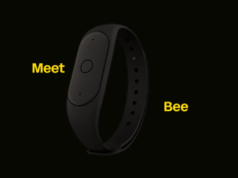Logitech hardly needs an introduction as a company. For decades, the company is omnipresent in the peripherals market. From low-cost office keyboards to advanced gaming mice and from headsets to console gamepads, the company offers numerous products for nearly every kind of system.
Successful as the company may be, Logitech’s first endeavor to release top-tier mechanical keyboards was not quite up to the company’s well-earned reputation. The first few models that the company released had certain drawbacks and failed to convince reviewers and customers alike that they were deserving of their very high retail price. Logitech however did not sit on their laurels. After the company had amassed enough feedback, they released new keyboards, some based on older models with certain corrections, and a few others based on new designs.
Today we will be having a look at Logitech’s new flagship mechanical keyboard, the G910 Orion Spectrum. It is largely based on the infamous G910 Orion Spark, essentially correcting the issues that kept the previous model from gaining traction. This review also marks our first look at a product with Logitech’s Romer-G switches, which are made by Omron and are exclusive to Logitech.
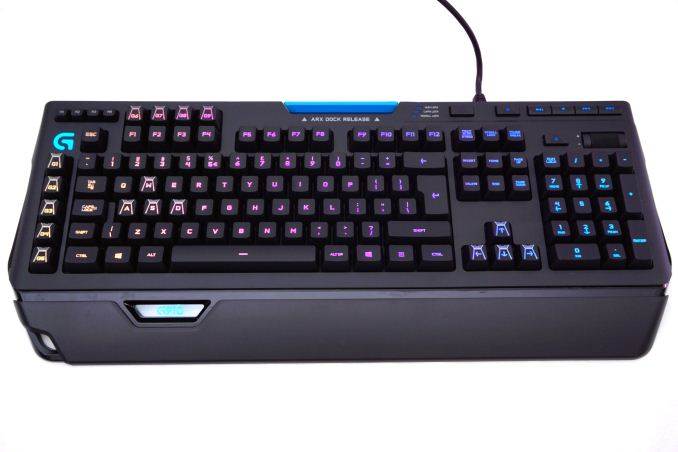
Logitech supplies the G910 Orion Spectrum in a wide, yet very thin cardboard box with narrow walls. The company probably tried to minimize the shipping costs of the keyboards, but the level of shipping protection is only borderline acceptable. The artwork on the box is very simple and serious, based on a good picture of the keyboard itself. Logitech bundles nothing other than a basic quick start guide alongside with the G910 Orion Spectrum.
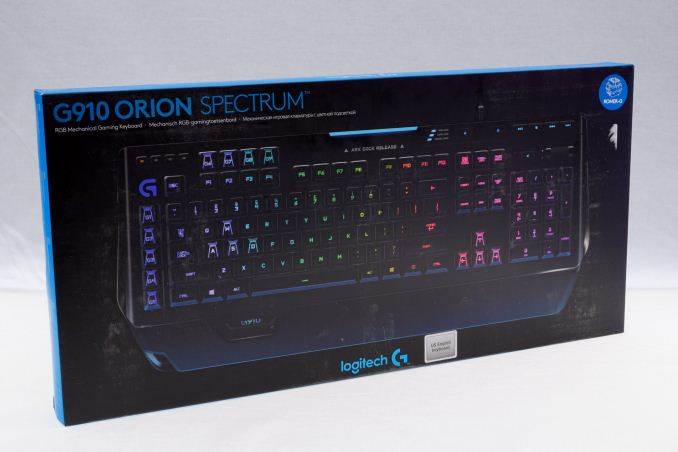
In terms of aesthetics, the G910 Orion Spectrum is based on a modern design, with futuristic curves and rounded cutouts. Considering its purpose and target market, we feel that it has an excellent balance between elegance and extravagance. However, the excessive use of plastic is not going to be very pleasing for those seeking a premium look, especially when most top-tier keyboards are metallic nowadays. Nevertheless, the plastics of the G910 Orion Spectrum are of excellent quality and thus metal would only offer an aesthetic advantage.
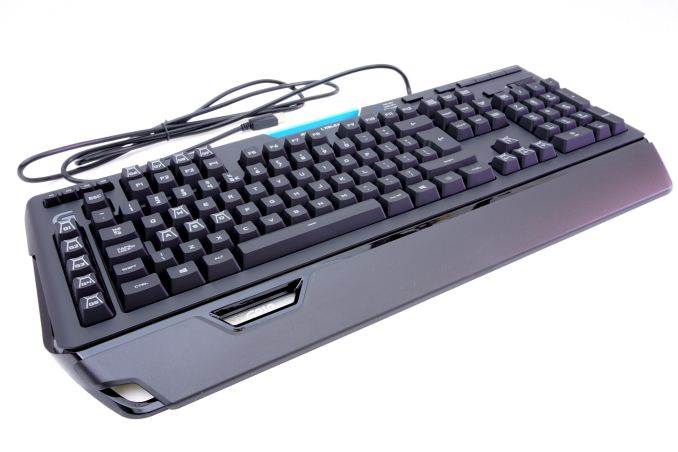
We received the US/International version of the keyboard, or at least that is what the box said. The layout of the actual keyboard however was different, looking like a mix of an ISO 105 key layout with ANSI keycaps. As ISO layout has one key more than ANSI; one keycap repeats itself next to the Enter and to the left Shift key.
One of the major upgrades in comparison to G910 Orion Spark are the new keycaps. On the Spark, the keycaps received numerous complaints for having peculiar keycaps with sharply rising edges. The keycaps of the G910 Orion Spectrum on the other hand are cylindrical, and they are made from ABS plastic and have bold characters printed right in the middle. The extra G keys and eight of the main keys (WASD and the arrow keys) have a pattern printed on them but they still are cylindrical like every other key. Do note however that the company does not supply normal replacements for the WASD and arrow keys, so users will be stuck with them visually standing out regardless whether it is convenient for them or not.
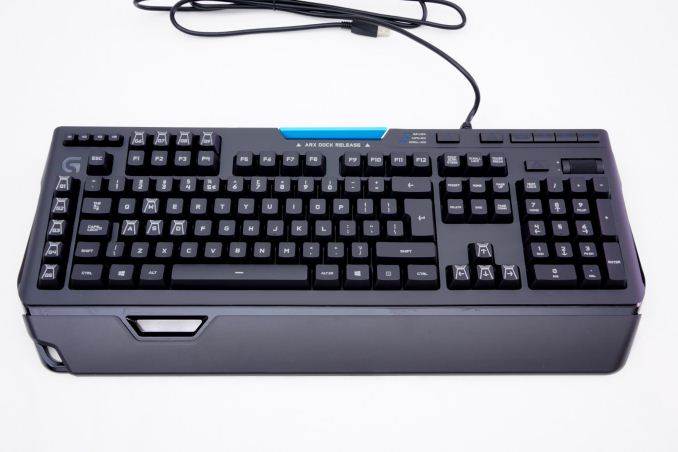
The Logitech G910 Orion Spectrum has nine extra programmable keys for macros and advanced functions. Five are placed vertically to the left side of the keyboard and four are right above the F1 to F4 keys. Four smaller buttons for quick mode changing and macro recording can be found at the top left corner of the keyboard. A subtle illuminated logo can be seen at the top left corner of the keyboard, between the left macro keys and the mode buttons.
Moving on, low profile, rectangular buttons and a plastic wide wheel have been installed for basic multimedia control. The wheel naturally controls the volume and a rectangular flat button next to it mutes the volume. Four rounded rectangular buttons above the volume control wheel provide basic media functions, with the Play/Pause key having a flattened top for tactile feedback. There are two more rectangular buttons towards the center of the keyboard, one for turning on or off the lighting and one for entering the “game mode” that locks certain keys (by default, the Windows keys only). The lighting button has no brightness settings; it only turns the lighting entirely off. Brightness and effects are only programmable via the company’s software.

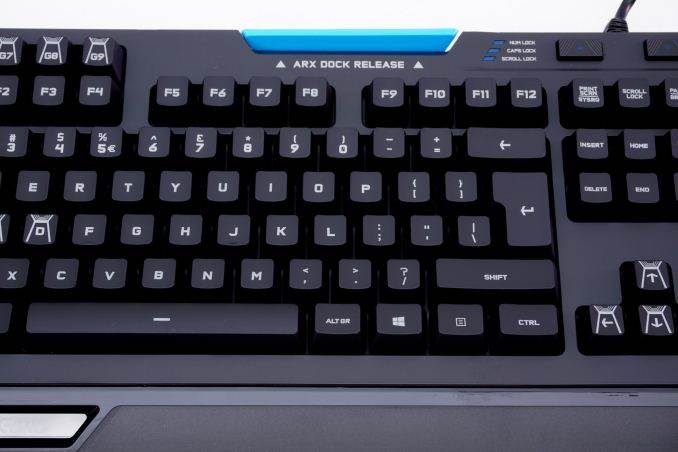
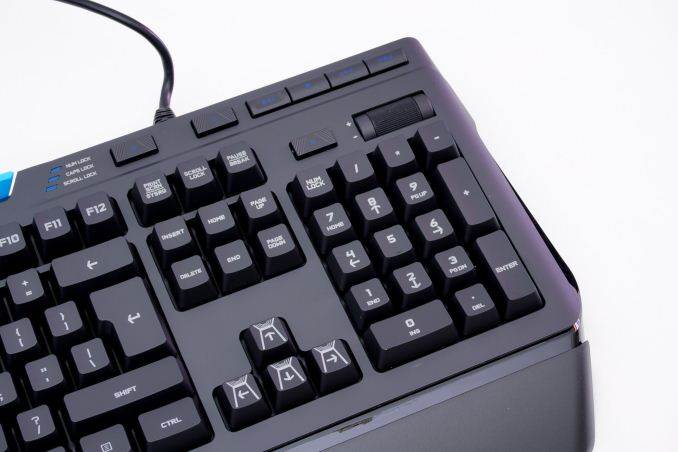
There are no USB pass-through ports on the G910 Orion Spectrum. Only a normal, unbraided cable exits from the right side of the keyboard. Logitech probably felt that the braided cable would not visually match the glossy plastics of the keyboard. The blue plastic tray at the back of the keyboard is one of its most advertised features – the ARX dock.
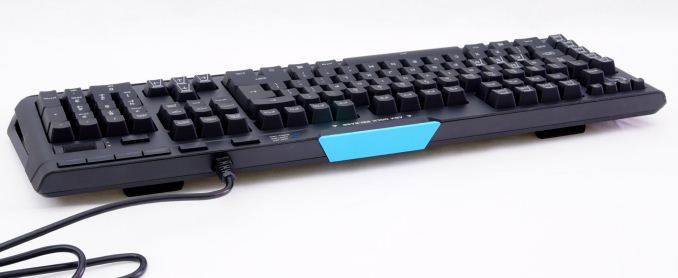
When pulled out, the ARX dock functions as a holder for virtually any smartphone or tablet. The word “dock” is probably a little misleading, as the touchscreen device will not actually connect with the keyboard directly but wirelessly, via Logitech’s software and Android/iOS application. The blue plastic is actually nothing more than a holder.
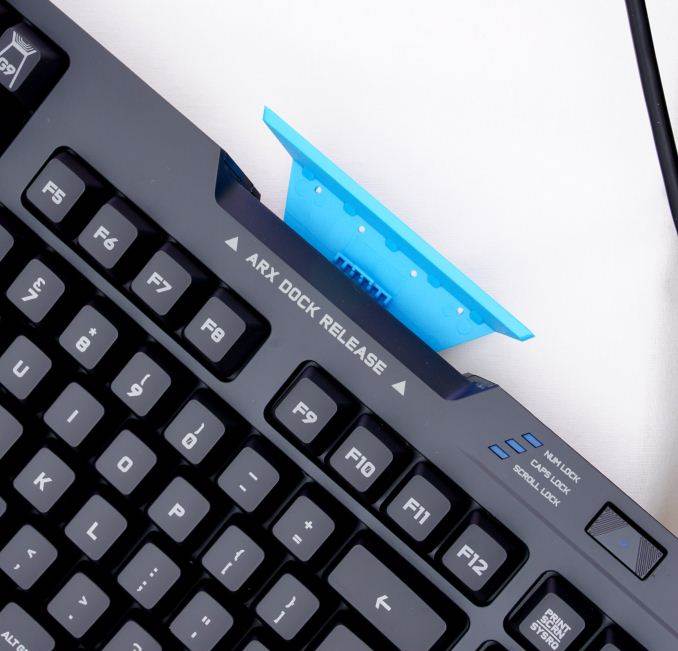
Smartphones with 5” to 5.5” screens are an excellent fit (the 5” Lenovo Vibe Shot Z90 is being used in our pictures as a reference). It would be nice if Logitech had considered the ability to at least charge the device – as its battery drain from having its screen constantly on will be humongous – though admittedly an effective universal charging solution would likely be more trouble than it’s worth.
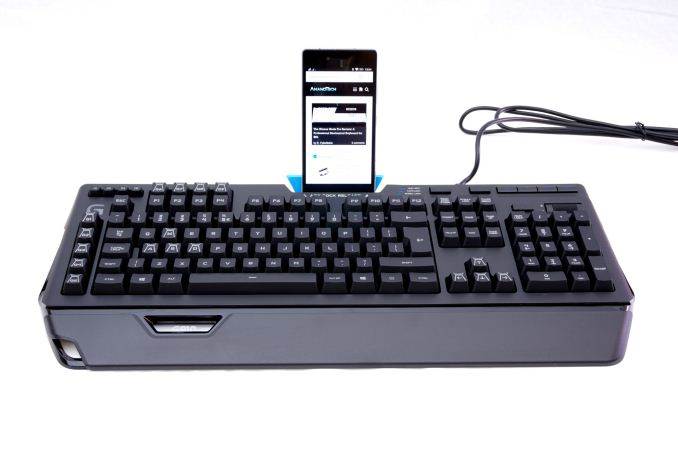
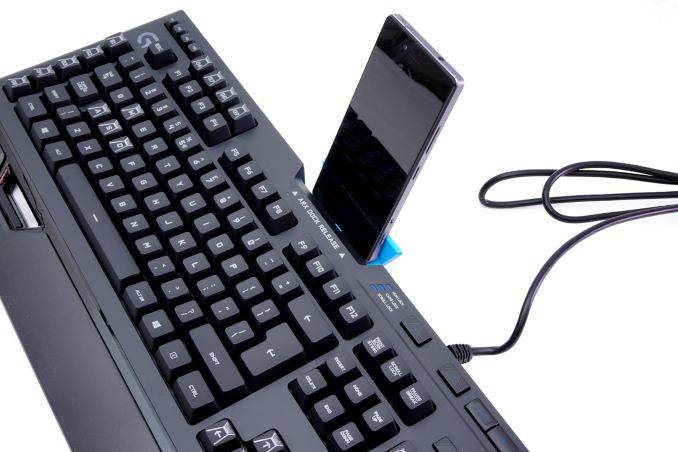
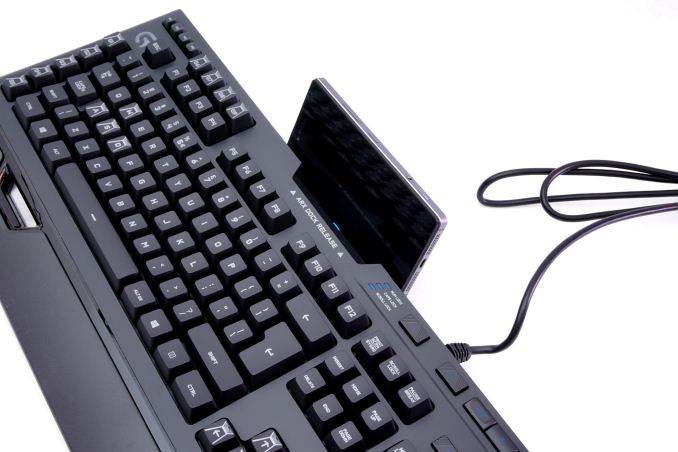
The palm rest is another part that Logitech decided to change on the G910 Orion Spectrum, as the uneven palm rest of the G910 Orion Spark had received much negative feedback for various reasons. Although the supports beneath the palm rest remain the same, the company designed a straight palm rest for it that ought to be comfortable for gamers and professionals alike. It still is not possible to remove the palm rest completely, as the plastic supports beneath it are part of the keyboard’s main frame.
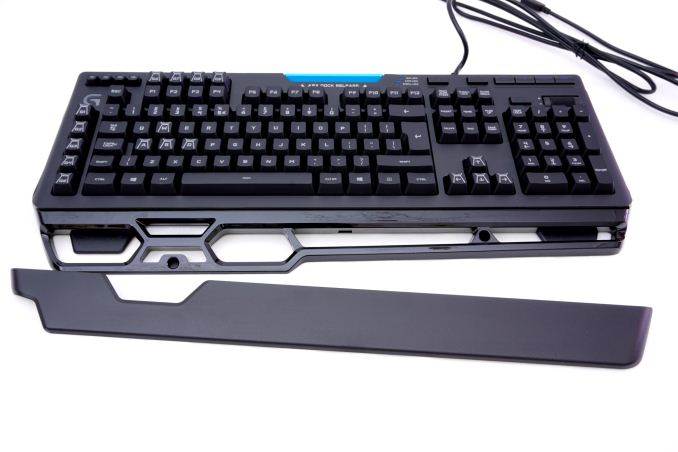
Strangely, Logitech made a real effort to make the bottom of the keyboard aesthetically appealing. They placed large polygonal anti-skid pads at the lower edges of the keyboard, as well as a large tetrahedral pads at the middle-top. Smaller rectangular pads can be seen at the top edges of the keyboard, next to the wide feet. The embossed plastic bottom is forming futuristic geometric shapes that serve no practical function, only aesthetics.
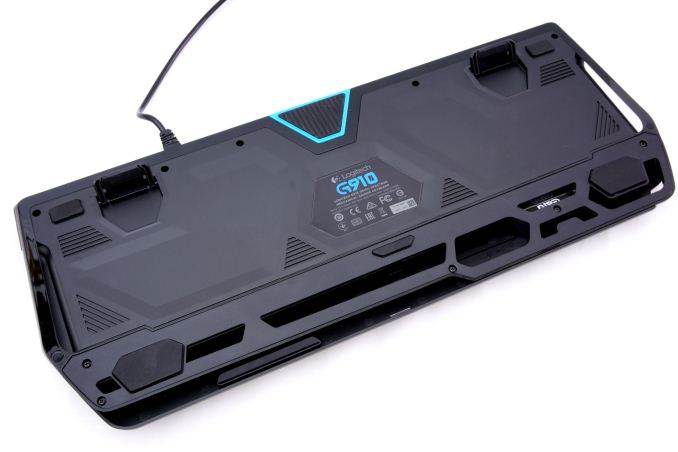
The mechanical switches of the G910 Orion Spectrum are Logitech’s exclusive Romer-G switches. These are made by Omron and Logitech has designed them specifically with gaming in mind. They are tactile, quiet and have an actuation force of 45g. Some compare them with Cherry’s MX Brown switches, but that is highly inaccurate, as the Romer-G switch has a much softer tactile bump and much shorter travel and actuation distances, at 3 mm and 1.5 mm respectively. The LED are installed at the center of the switch, providing excellent lighting to the inside of the keycap and minimizing light leakage around it. Cherry MX cross-type supports have been installed beneath the larger keys. The Romer-G switches however are entirely incompatible with keycaps that have been designed for keyboards with Cherry MX or compatible switches. Practically, the only source for keycaps compatible with the Romer-G switch currently is Logitech.
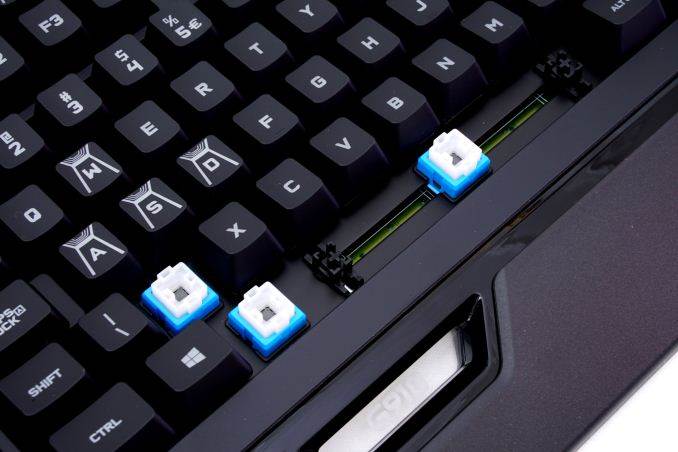
The removal of the top plastic cover reveals the metallic plate that is responsible for the keyboard’s high mechanical strength. The switches are permanently attached to the plate and soldered to the PCB below. Membrane electronic contacts are being used for the smaller buttons. Logitech’s assembly quality is excellent, with no flaws or weak spots that we could identify.
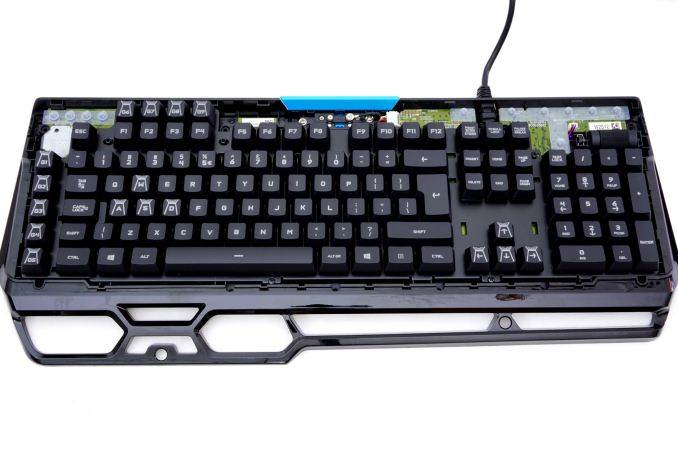
Most enthusiasts would be amazed to find out that the heart of the Logitech’s flagship is a low-cost ARM processor from ST Microelectronics. The STM32L100-R8T6 is a low power, low frequency 32MHz RISC CPU with 64Kb of flash memory. It might seem to be very weak compared to what the competition is using but it actually is more than enough for the G910 Orion Spectrum, as the keyboard actually is not fully programmable. As we will also see in the following pages, only the extra G keys of the keyboard are programmable.
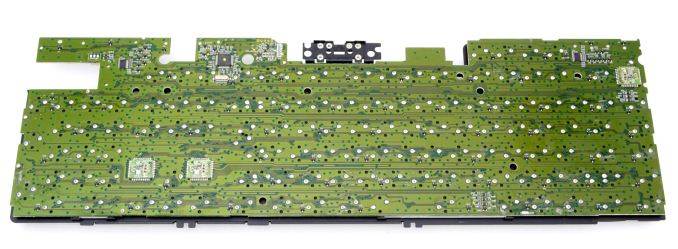
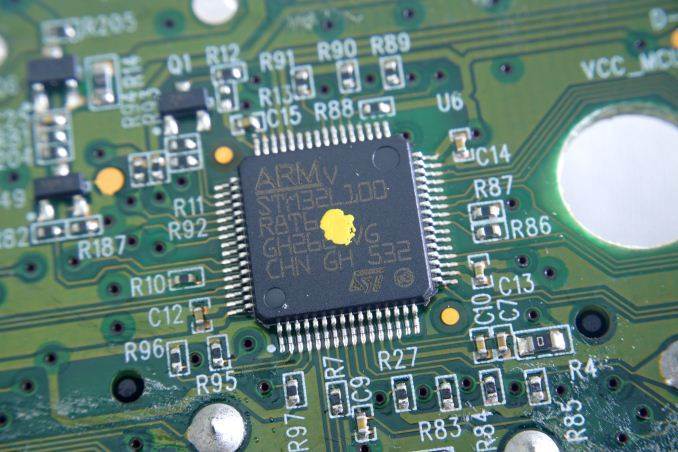

Logitech’s Gaming software is well designed, offering very good options and flexibility while being easy to use. The main screen has no practical purpose, as it merely illustrates the selected Logitech peripheral, the G910 Orion Spectrum in our case. Access to other devices and features is possible via the buttons docked in the bottom row of the user’s interface.
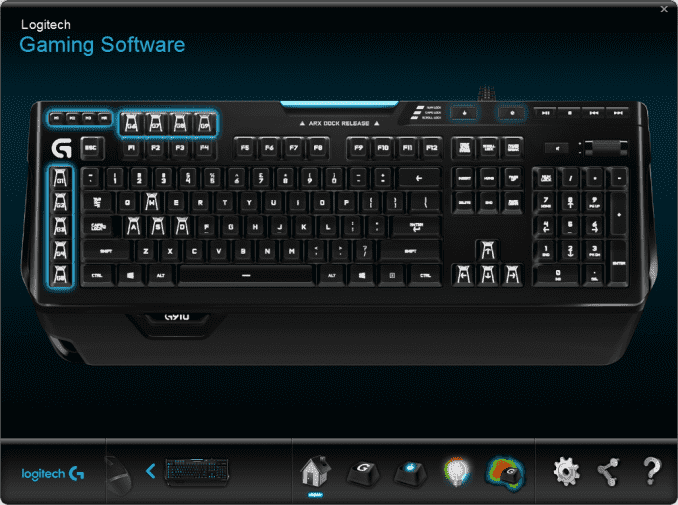
An entire screen is dedicated to the keyboard’s “Game mode” button. From this screen the user can select any keys of the keyboard that wants to have disabled once the game mode button has been pressed.
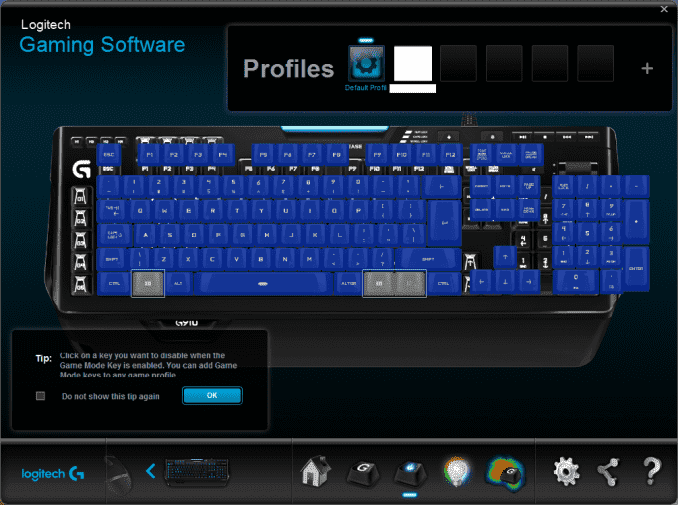
The lighting button allows the programming of the keyboard’s lighting mode and effects. The keys can be individually programmed to a specific color or keyboard-wide effects can be initiated.

The heat map button is purely informative, allowing the user to record the number of keystrokes that the software will then present into a “heat map” that will indicate which of the keys are getting more keystrokes than others. Note that the recording has to be manually initiated, by default this option has been disabled.
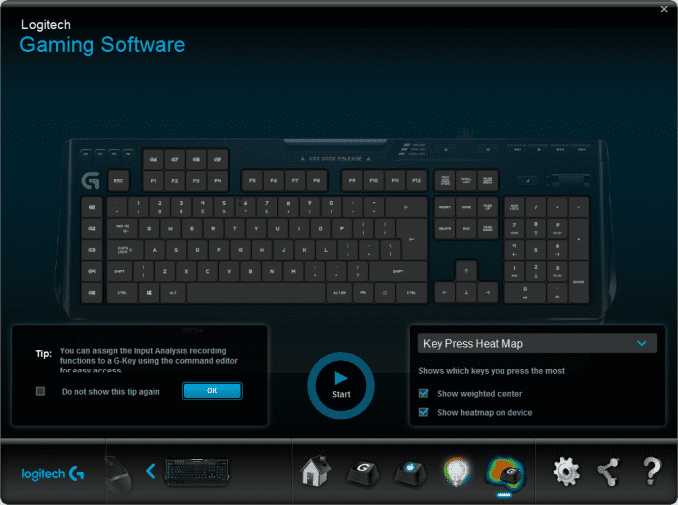
The G button leads to the most important section of the interface, the section that allows for the programming of profiles, modes and advanced commands (macros). Profiles can be linked to specific applications/games and automatically initiate once they have been launched. Sadly, only the nine extra “G” keys…



